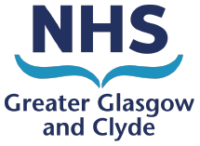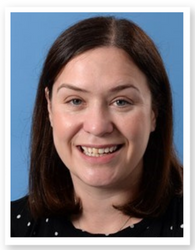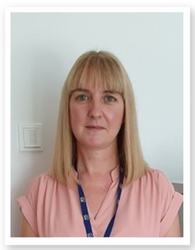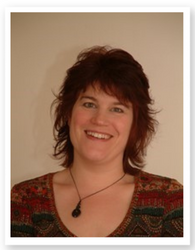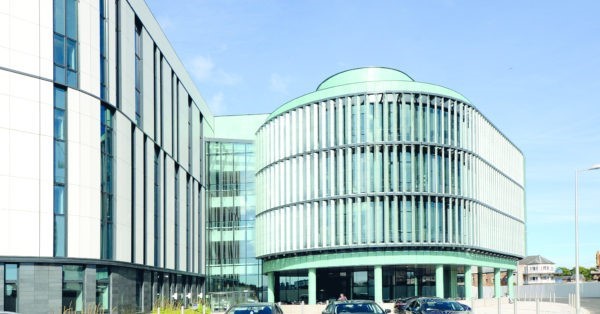The Glasgow Neuroimmunology Diagnostic Laboratory offers a range of standard and specialist antibody assays.
A wide variety of autoimmune diseases affecting the nervous system are associated with measurable abnormalities in either the serum or the cerebrospinal fluid. These tests can aid in accurate clinical classification and guide decisions about treatment for neurologists and physicians involved in the management of patients with autoimmune neurological diseases.
The laboratory has a special interest and expertise in the measurement of anti-glycolipid antibodies found in the serum of patients with a wide variety of auto-immune neuropathies.
The service is available to clinicians throughout the UK and overseas. A small charge is levied to cover costs. Contact the laboratory for current prices.
For our laboratory handbook, routine request form, accreditation and quality information, please see the Immunology and Neuroimmunology page.
In House Testing
Ganglioside (Anti-Glycolipid Antibodies)
Anti-glycolipid antibodies are found in a significant proportion of patients with a variety of autoimmune peripheral neuropathies. They are measured in the serum by enzyme-linked immunosorbent assay (ELISA). A wide variety of anti-glycolipid antibodies are present under different clinical circumstances and the laboratory offers a range of diagnostic tests using a panel of up to 12 glycolipid antigens. Such investigations can be useful to classify acute and chronic motor or sensory neuropathies and thus aide diagnosis and clinical management.
Anti-glycolipid antibodies are associated with several distinct peripheral nerves syndromes: Multifocal motor neuropathy is associated with anti-GM1, -GA1 and -GD1b IgM antibodies. Chronic ataxic neuropathy with ophthalmoplegia M-protein, cold agglutination, and disialosyl antibodies (acronym: CANOMAD) is associated with anti-GD1b and related IgM antibodies. Miller Fisher syndrome is associated with anti-GQ1b and -GT1a IgG antibodies. Acute motor axonal neuropathy (AMAN) is associated with anti-GM1 and -GD1a IgG antibodies.
A clinically important form of IgM paraproteinaemic neuropathy is associated with antibodies to myelin-associated glycoprotein (MAG) and a closely related glycolipid termed sulphated glucuronyl paragloboside. These antibodies are detected by a commercial ELISA assay kit using MAG as the antigen. The neuropathy has a characteristic clinic pattern and in the vast majority of cases is associated with an IgM gammopathy. Around 50% of patients with neuropathy-associated IgM gammopathy have anti-MAG antibodies.
ELISAs depend on the fact that antibodies or antigen can be linked to an enzyme, with the complex retaining both immunological and enzymatic activity. In these assays the antigen (ganglioside) is attached to a solid phase support (ELISA plate) to allow for easy separation of bound and free antibody (patient serum). Detection is by a horseradish peroxidase labelled anti-human serum which can be visualized by a colour reagent and read spectrophotometrically. 1ml of serum is required for these investigations.
The assay is conducted two tothree times per week and results are reported the following day.
Acetylcholine Receptor Antibodies
Antibodies to the acetylcholine receptor (anti-AChR) are present in a very high proportion of patients with the neuromuscular transmission disorder, myasthenia gravis (MG). Myasthenia gravis is clinically characterized by generalised muscle weakness with fatiguability (generalised MG). This condition also frequently involves and is isolated to the extraocular muscles, leading to the symptom of double vision (ocular MG). Anti-AChR autoantibodies interfere with normal neuromuscular function by binding to the post-synaptic acetylcholine receptor.
The disease has a prevalence of approximately 5 per 100,000 individuals and can occur at any age. In women, the disease usually presents between the ages of 20 and 40 years, while disease onset in men typically occurs later in life. There is also a peak of incidence in old and very old age; thus neither age nor sex are precluding factors for anti-AChR screening. MG also has a strong association with tumours of the thymus (thymoma).
Approximately 90% of patients with generalised MG have these antibodies detectable in their serum. In patients with purely ocular MG the proportion of positive patients is lower at approximately 70%. A positive result is up to 99% specific for MG. Antibody titres tend to be higher in females and a correlation between antibody titre and the degree of muscle weakness has been observed in longitudinal studies in individual patients; however titre cannot be used to compare severity between individuals. In individual patients with established myasthenia gravis, anti-AChR antibody titres tend to rise several weeks before exacerbations. Remission after thymectomy is associated with a progressive decline in antibody titres. Consequently, serial measurements of acetylcholine receptor antibodies can be useful in monitoring disease progression, as well as the effects of treatment.
Anti-AChR antibodies can also very rarely be positive in uncomplicated thymoma, primary lung cancer, and in patients with autoimmune liver disease. A negative anti-AChR antibody test does not preclude the diagnosis of MG. Anti-AChR seronegative cases exist, and a proportion of these have antibodies to a neuromuscular protein termed MuSK (muscle specific kinase). In a clinically related condition, the Lambert-Eaton myasthenic syndrome (LEMS), antibodies to a presynaptic protein (the voltage gated calcium channel, VGCC) are present.
The anti-AChR test is conducted by a radioimmunoprecipitation assay using radio-iodinated bungarotoxin bound to acetylcholine receptors that have been extracted from an acetylcholine receptor expressing cell line. 125I-AChR is incubated with test sera and any resulting complex of labelled receptor and receptor antibody is then immunoprecipitated with anti-human IgG. After a centrifugation and wash step the precipitate is counted, and the result is reported as nmol/litre of anti-AChR antibody.
The assay is conducted once per week and results are despatched the following day. 1ml of serum is required for this investigation.
Oligoclonal Bands
The clinical diagnosis of multiple sclerosis can be supported by analysis of cerebrospinal fluid (CSF). In a very high proportion of patients with multiple sclerosis (>90%) the CSF contains oligoclonal bands that are not present in the serum.
Oligoclonal bands are IgG immunoglobulins secreted by plasma cells that are resident within the CNS in multiple sclerosis. They are secreted into the CSF and can be detected using isoelectric focusing (IEF) in combination with Western blotting. Serum immunoglobulins are also present in low concentration in the CSF and in order to reliably discriminate between locally (CNS) synthesised and systemically synthesised immunoglobulins it is necessary to analyse both serum and CSF collected from a patient at the same time.
The oligoclonal bands resolved by IEF are visualized by IgG-specific antibody staining. The detection of CSF oligoclonal bands by isoelectric focusing is not absolutely specific for multiple sclerosis. It reaches its maximal value in the differential diagnosis only when other rare causes of CNS inflammation have been excluded. Isoelectric focusing (IEF) of CSF in agarose gels is followed by passive blotting onto nitrocellulose membrane, followed by immunostaining of IgG by double antibody, using horseradish peroxidase as a visualizing agent.
Isoelectric focusing is a method of electrophoresis in a pH gradient established between two electrodes and stabilized by carrier ampholytes. In this technique proteins migrate until they align themselves at their isolelectric point (pI), the point at which a protein possesses no net overall charge and will therefore cease migrating.. It is the electrophoretic technique of choice for detecting CSF immunoglobulin diversity with the highest resolution, in which component that differ by 0.001 of a pH unit can be resolved.
For this assay 1ml of CSF and 1ml of serum are required. Smaller volumes can be analysed upon request. The assay is conducted twice a week and results are reported the following day.
Anti-Neuronal Antibodies
Anti-neuronal antibodies are present in the serum of patients with paraneoplastic disorders affecting the nervous system. These disorders have a very wide range of clinical presentations and often enter the differential diagnosis of complex neurological problems. Sensitivity and specificity of the tests available are difficult to state and vary according to clinical circumstances.
Negative results do not preclude the possibility of an underlying paraneoplastic disorders. Strongly positive results in appropriate clinical circumstances should lead to a thorough search for an appropriate underlying neoplasm, although this search may ultimately be negative. In many human sera from individuals unaffected by paraneoplastic syndromes, low levels of antibody to paraneoplastic antigens may be detected using the sensitive assays performed; these results must be carefully considered along with the clinical findings in individual patients in order to assess their significance. The laboratory reports the results of the assays without reference to the patient demographics or clinical circumstances. Individual cases in which uncertainty in interpretation exists should be discussed with the laboratory director.
Paraneoplastic antigen-antibody pairs include anti-Yo (PCCA), anti-Hu (ANNA-1) and anti-Ri (ANNA-2) antibodies. They are screened in the first instance by immunofluorescent staining of sections from primate cerebellum.
Primate cerebellum can be used to detect the following antibodies:- GAD, PCA (Yo), ANNA1 (Hu), ANNA2 (Ri), Ma2Ta, Amphiphysin, CV2/CRMP5, SOX1, and Tr.
Positive or borderline samples are then screened for anti-Hu, -Yo, -Ri, -CV2, -Ma2/Ta, Titin, Recoverin, SOX1 and Amphiphysin activity by Immuno blot analysis using recombinant antigen kits. The recombinant antigen kits are highly sensitive and thus frequently detect low levels of antibody that are unlikely to be of clinical significance
(currently the Euroimmun Neuronal Antigens Profile PLUS RST Kit).
1ml of serum is required for these investigations.
The assay is conducted once a week and results reported that day.
Please use this link to view a table describing the most widely recognised associations between antibody, tumour type and clinical presentation:
NMDA (Anti-Glutamate Receptor (Type NMDA) Antibodies)
Anti-NMDA receptor encephalitis manifests along a spectrum of psychosis, altered behaviour, movement disorder, seizures, autonomic dysfunction and decreased consciousness. In younger patients, particularly female, it is associated with an underlying teratoma. Early identification and treatment with immunotherapy leads to better outcomes (Pubmed ID 23290630). It is less common in older patients (over 45 years old) and they display a less severe phenotype and have poorer outcomes (Pubmed ID23946310).
Antibodies against the NR1 subunit of the NMDA receptor are identified in our laboratory via indirect immunofluorescence of cell lines transfected with cDNA coding this protein. This test has very high positive and negative predictive values. Testing is carried out on serum or CSF. CSF is preferred for testing since there are fewer false positives or false negatives compared with serum.
LGI1 & CASPR2 (Anti Voltage Gated Potassium Channel Associate Proteins)
Antibodies against the VGKC associated proteins LGI1 and Caspr2 are associated with a number of neurological syndromes.
Anti-LGI1 antibody encephalitis usually manifests in a number of ways. It can cause faciobrachial dystonic seizures (FBDS), other focal seizures – often with prominent autonomic features – a more pronounced limbic encephalitis with amnesia, cognitive decline and seizures, or it can cause a rapidly progressive encephalopathy (Pubmed ID 27590293).
Anti-Caspr2 antibody mediated syndromes include peripheral nerve hyperexcitability, Morvan syndrome and a more protracted, subacute limbic encephalitis with encephalopathy, seizures, cerebellar dysfunction, autonomic disturbance, neuropathic pain, insomnia and weight loss (Pubmed ID 27371488).
Antibodies against Caspr2 or LGI1 are identified in our laboratory via indirect immunofluroscence of cell lines transfected with cDNA coding the protein of interest. This is a very specific and sensitive test for antibodies against these antigens and an alternative to the anti-voltage-gated potassium channel complex antibody (VGKCC) radioimmunoassay.
Anti-GAD65 Antibodies associated with Stiff Person Syndrome
Antibodies against the enzyme glutamic acid decarboxylase (GAD) are associated with a number of neurological syndromes. Stiff-person syndrome (SPS) is the most common and clearly associated condition. It is likely that the circulating antibodies are pathogenic in this condition.
The vast majority of patients with SPS have very high serum titres of anti-GAD antibodies. A small number are negative for anti-GAD but have anti-amphiphysin antibodies. In the anti-amphiphysin positive cases there is often a paraneoplastic cause, most commonly breast cancer in women.
Stiff-limb syndrome (SLS) is similar to SPS but the clinical pattern of stiffness and other clinical features differ and the immunological profile also differs, with more patients with SLS being anti-GAD antibody negative.
Progressive encephalomyelitis with rigidity and myoclonus (PERM) is a more severe, rapidly progressive and fulminant form of SPS that often includes brainstem dysfunction. Some patients are anti-GAD antibody positive but many are not. Other antibodies are also associated with PERM including anti-amphiphysin, anti-glycine and others.
Anti-GAD antibodies have been reported in association with a number of other neurological syndromes including treatment-resistant focal epilepsy, ataxia and others. The relationship between the antibodies and neurological symptoms in these patients is less clear than for SPS.
Lower titres of anti-GAD antibodies are seen in patients with autoimmune diabetes. These recognise an epitope distinct from that recognised by anti-GAD antibodies found in patients with SPS, they are generally not seen in CSF and do not stain cerebellar tissue sections.
Anti-Aquaporin 4 and Anti-MOG Antibodies
Antibodies against the aquaporin 4 (AQP4) channel are the commonest detected autoantibody in neuromyelitis optica spectrum disorder (NMOSD). Up to 80% of NMOSD patients have these antibodies. They are also found in up to 50% of patients with longitudinally extensive transverse myelitis (LETM) who do not otherwise meet the NMOSD criteria. We test for these antibodies in serum using a commercial cell-based assay. https://www.ncbi.nlm.nih.gov/pmc/articles/PMC5013123/
Antibodies against myelin oligodendrocyte glycoprotein (MOG) are seen in a large proportion of patients with NMOSD who do not have detectable anti-AQP4 antibodies. The clinical phenotype in anti-MOG antibody-associated disease is a wide spectrum that includes classic NMO, isolated optic neuritis, transverse myelitis, focal cortical encephalitis and acute disseminated encephalomyelitis (ADEM). We test for these antibodies in serum using a commercial cell-based assay.
Both these antibodies are tested for in parallel in our cell-based assay and so a request for either antibody will generate a report for both. We perform the test on serum. We have not validated the assay on CSF.
